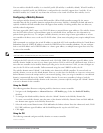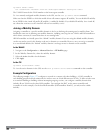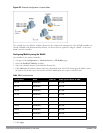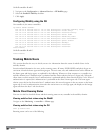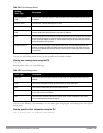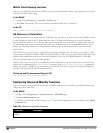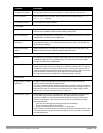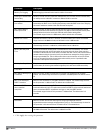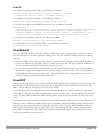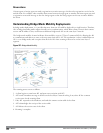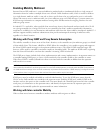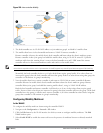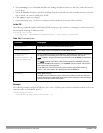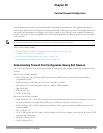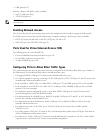
In the CLI
To configure foreign agent functionality, use the following command:
ip mobile foreign-agent {lifetime <seconds> | max-visitors <number> |
registrations {interval <msecs> | retransmits <number>}}
To configure home agent functionality, use the following command:
ip mobile home-agent {max-bindings <number>|replay <seconds>}
To configure proxy mobile IP and DHCP functionality, use the following command:
ip mobile proxy
auth-sta-roam-only | block-dhcp-release | dhcp {aggressive-transaction|ignore-options|max-
requests <number>|transaction-hold <seconds>|transaction-timeout <seconds>}| event-
threshold <number> | log-trail | no-service-timeout <seconds> | on-association | stale-
timeout <seconds> | stand-alone-AP | trail-length <number> |trail-timeout <seconds>
To configure revocation functionality, use the following command:
ip mobile revocation {interval <msec>|retransmits <number>
To enable packet trace for a given MAC address, use the following command:
ip mobile packet-trace <host MAC address>
Proxy Mobile IP
The
proxy mobile IP module
in a mobility-enabled controller detects when a mobile client has moved to a foreign
network and determines the home agent for a roaming client. The proxy mobile IP module performs the following
functions:
l Derives the address of the home agent for a mobile client from the HAT using the mobile client’s IP address. If
there is more than one possible home agent for a mobile client in the HAT, the proxy mobile IP module uses a
discovery mechanism to find the current home agent for the client.
l Detects when a mobile client has moved. Client moves are detected based on ingress port and VLAN changes
and mobility is triggered accordingly. For faster roaming convergence between AP(s) on the same controller, it is
recommended that you keep the “on-association” option enabled. This helps trigger mobility as soon as 802.11
association packets are received from the mobile client.
Proxy DHCP
When a mobile client first associates with a controller, it sends a DHCP discover request with no requested IP. The
controller allows DHCP packets for the client onto the configured VLAN where, presumably, it will receive an IP
address. The incoming VLAN becomes the client’s home VLAN.
If a mobile client moves to another AP on the same controller that places the client on a different VLAN than its
initial (home) VLAN, the
proxy DHCP module
redirects packets from the client’s current/visited VLAN to the home
VLAN. The proxy DHCP module also redirects DHCP packets for the client from the home VLAN to the visited
VLAN.
If the mobile client moves to another controller, the proxy DHCP module attempts to discover if the client has an
ongoing session on a different controller. When a remote controller is identified, all DHCP packets from the client
are sent to the home agent where they are replayed on the home VLAN. The proxy DHCP module also redirects
DHCP packets for the client from the home VLAN to the visited network. In either situation, operations of the
proxy DHCP module do not replace DHCP relay functions which can still operate on the client’s home VLAN,
either in the controller or in another device.
DellPowerConnectW-SeriesArubaOS6.2 | User Guide IPMobility | 502



